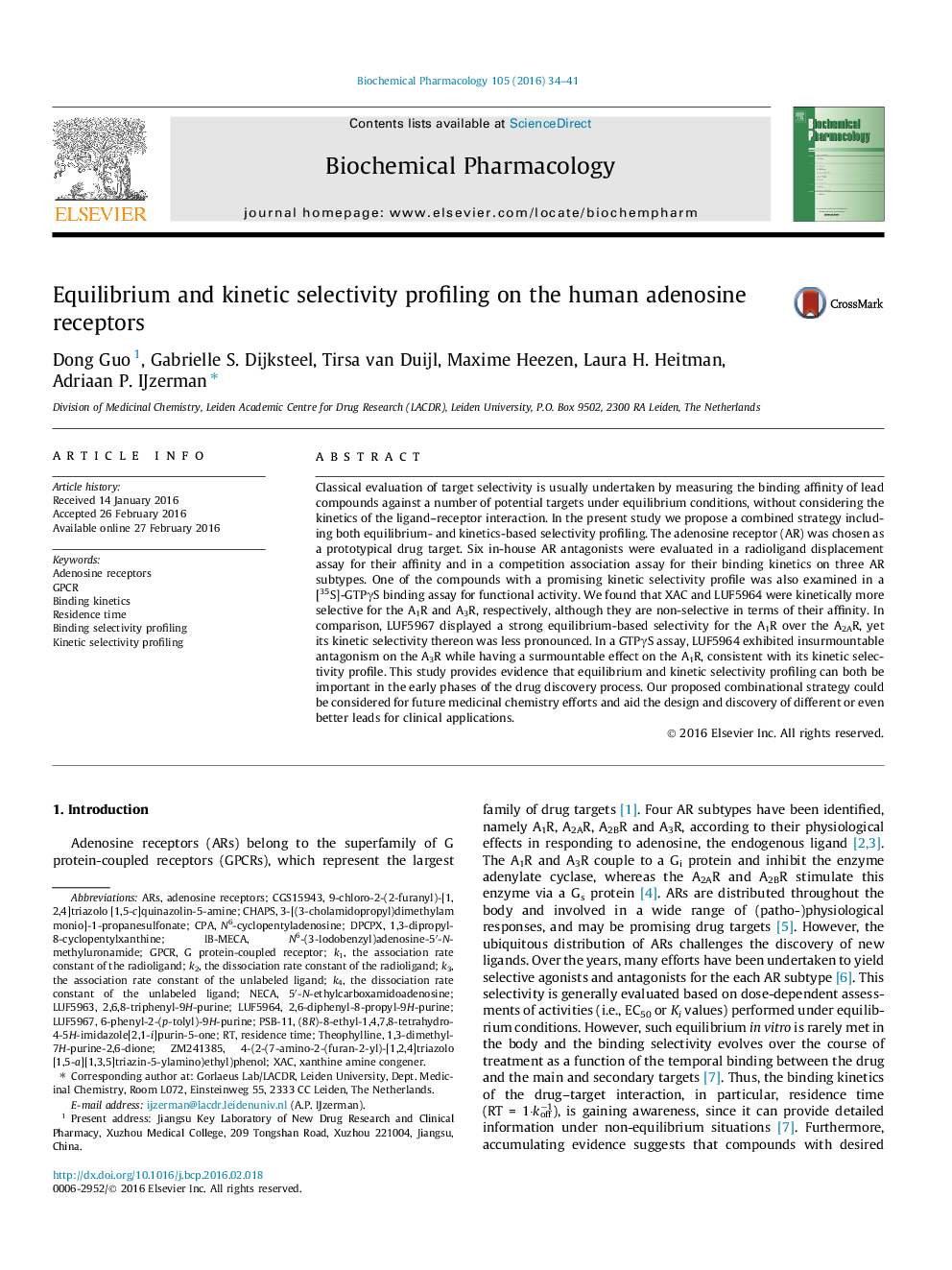| Article ID | Journal | Published Year | Pages | File Type |
|---|---|---|---|---|
| 2511814 | Biochemical Pharmacology | 2016 | 8 Pages |
Classical evaluation of target selectivity is usually undertaken by measuring the binding affinity of lead compounds against a number of potential targets under equilibrium conditions, without considering the kinetics of the ligand–receptor interaction. In the present study we propose a combined strategy including both equilibrium- and kinetics-based selectivity profiling. The adenosine receptor (AR) was chosen as a prototypical drug target. Six in-house AR antagonists were evaluated in a radioligand displacement assay for their affinity and in a competition association assay for their binding kinetics on three AR subtypes. One of the compounds with a promising kinetic selectivity profile was also examined in a [35S]-GTPγS binding assay for functional activity. We found that XAC and LUF5964 were kinetically more selective for the A1R and A3R, respectively, although they are non-selective in terms of their affinity. In comparison, LUF5967 displayed a strong equilibrium-based selectivity for the A1R over the A2AR, yet its kinetic selectivity thereon was less pronounced. In a GTPγS assay, LUF5964 exhibited insurmountable antagonism on the A3R while having a surmountable effect on the A1R, consistent with its kinetic selectivity profile. This study provides evidence that equilibrium and kinetic selectivity profiling can both be important in the early phases of the drug discovery process. Our proposed combinational strategy could be considered for future medicinal chemistry efforts and aid the design and discovery of different or even better leads for clinical applications.
Graphical abstractFigure optionsDownload full-size imageDownload as PowerPoint slide
